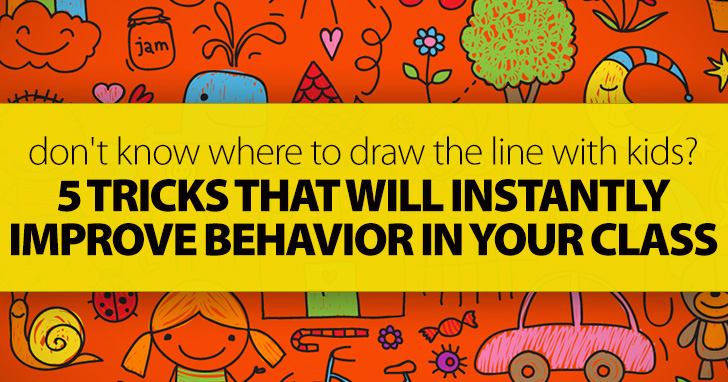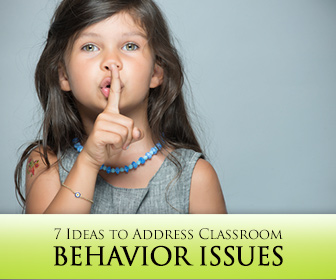When You Don't Know Where To Draw The Line With Kids: 5 Tricks That Will Instantly Improve Behavior In Your Class


We can manage children comfortably most of the time, in spite of the little things. The excessive energy, challenges with material, the fact that they study more or study less, when they forget things, lose things, all this and more is normal to us. Now, when things start to get out of hand and there is a lack of respect, it stops being fun for everyone. Issues with behavior are sometime hard to deal with since we need a great deal of information and resources. However, there are many things we can do. If we address these issues constructively, the kids will feel like part of the process and the result, will be so much better.

If there are rules in society, there are rules at school and in the classroom. Kids need to know what is expected of them and how the classroom will be organized. Teaching them the rules is just as important as teaching anything else. One option is to make a set of rules yourself and share them with the class on the first day. You can ask them what they think of the rules and why they believe these rules are important. With older kids, you might want to try a more democratic approach. If rules come from them and as a group, accepting those rules will come more naturally because they’ll feel like part of the process.
There are things that should be done and others that shouldn’t, it’s that simple, and it should be to them as well. Here is an interesting and constructive activity you can do with the kids. Make a list on the board of things that happen in any classroom good and bad. Then on poster board make two columns titled “appropriate” and on the other side “inappropriate”. They read the list and tell you what is appropriate and inappropriate. When you are done, go over it again and cross check the list with the rules set previously. With young children, use flash cards that show what is right and what isn’t.
As they say, “rules are meant to be broken”. This may be true, but in your classroom there are things you can do to avoid it. This is where another activity comes in handy: The Consequence chart. Children need to understand there are natural consequences and logical consequences to things they do. For instance you could ask them, “what could happen if someone throws a pen at a fellow classmate?” Wait for their answers, then if necessary elicit more. A typical answer from a student would be “you would get mad” or “it might hit someone on the face and hurt them”. Both are correct, the first is a logical consequence and the second a natural consequence.
We all remember our old buddy the star chart. Teachers have been using it for ages and some still do although, many teachers now prefer a different system for rewarding their students. Giving them an incentive when they behave well encourages them to continue doing so. Keep in mind that incentives are tricky sometimes. Remember, they are not a way to coax them into doing things, they should be perceived a consequence of good work or behavior; a good way for them to see there are all types of consequences.
You should always make classroom rules, talk about consequences and address issues with behavior in a constructive, nurturing and non-threatening manner. Use games and activities to encourage your kids to talk about what is happening. Games are more natural to them and while they are playing, learning also comes naturally.
If problems with behavior become frequent, you have to analyze what is causing the problem. It could be a reaction to something going on in the class, another child, lesson organization, type of activities you choose or because the lesson is too difficult or too easy. When a child misbehaves all the time, it is rarely just in your classroom and quite likely in general. You might need a meeting with his/her parents. If this is necessary, be prepared for that meeting and explain to parents everything you do in class to teach and talk about appropriate behavior. Explain what is happening in detail and then listen to them without jumping to conclusions.
Start and end all your lessons the same way. You could start with a song or game and the ending could be similar. Make sure the way you organize the lesson is clear and make sure to be prepared; avoid confusion or last minute changes. Kids don’t react well to confusion and chaos, and they’ll do a great job in letting you know just how they feel about it!